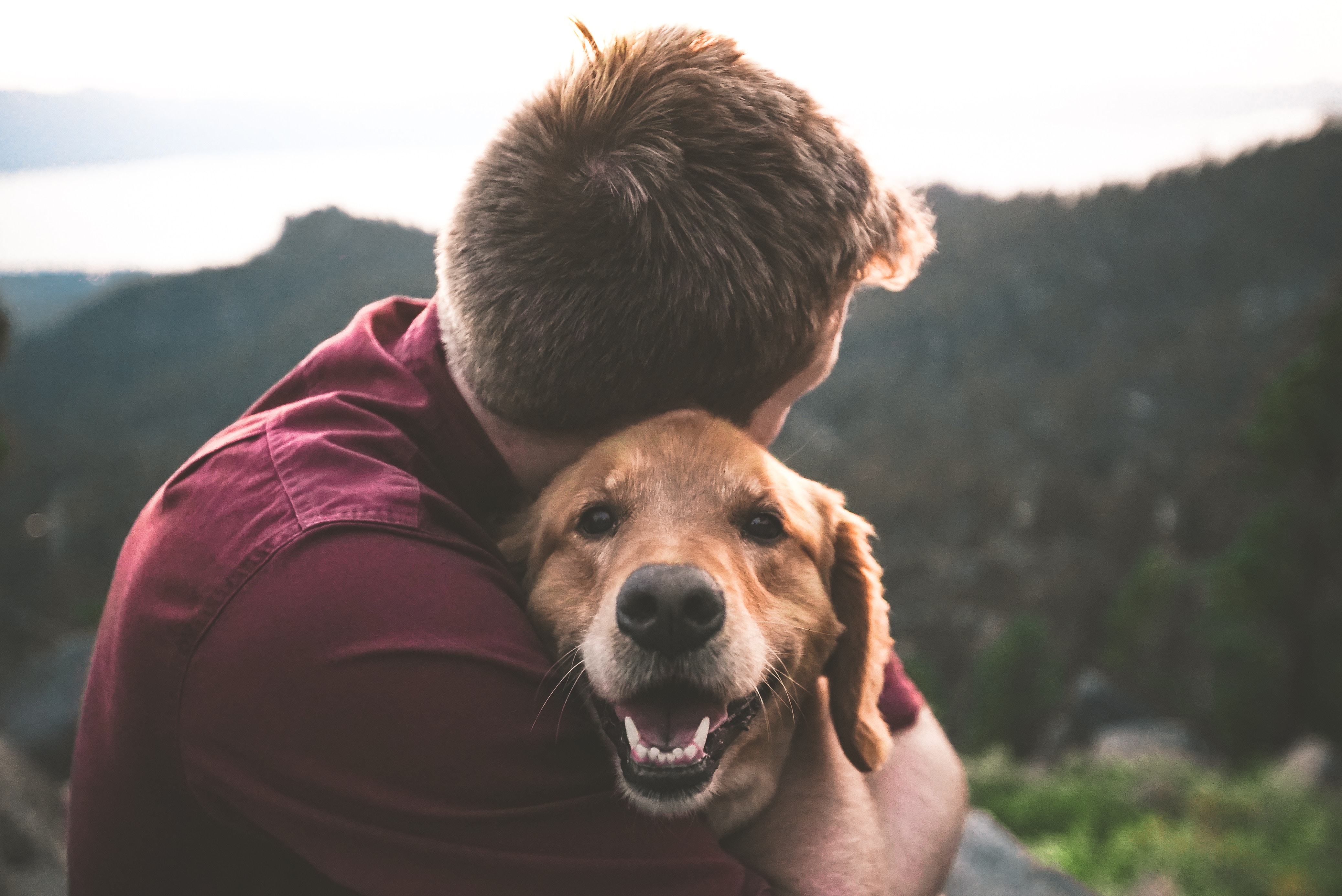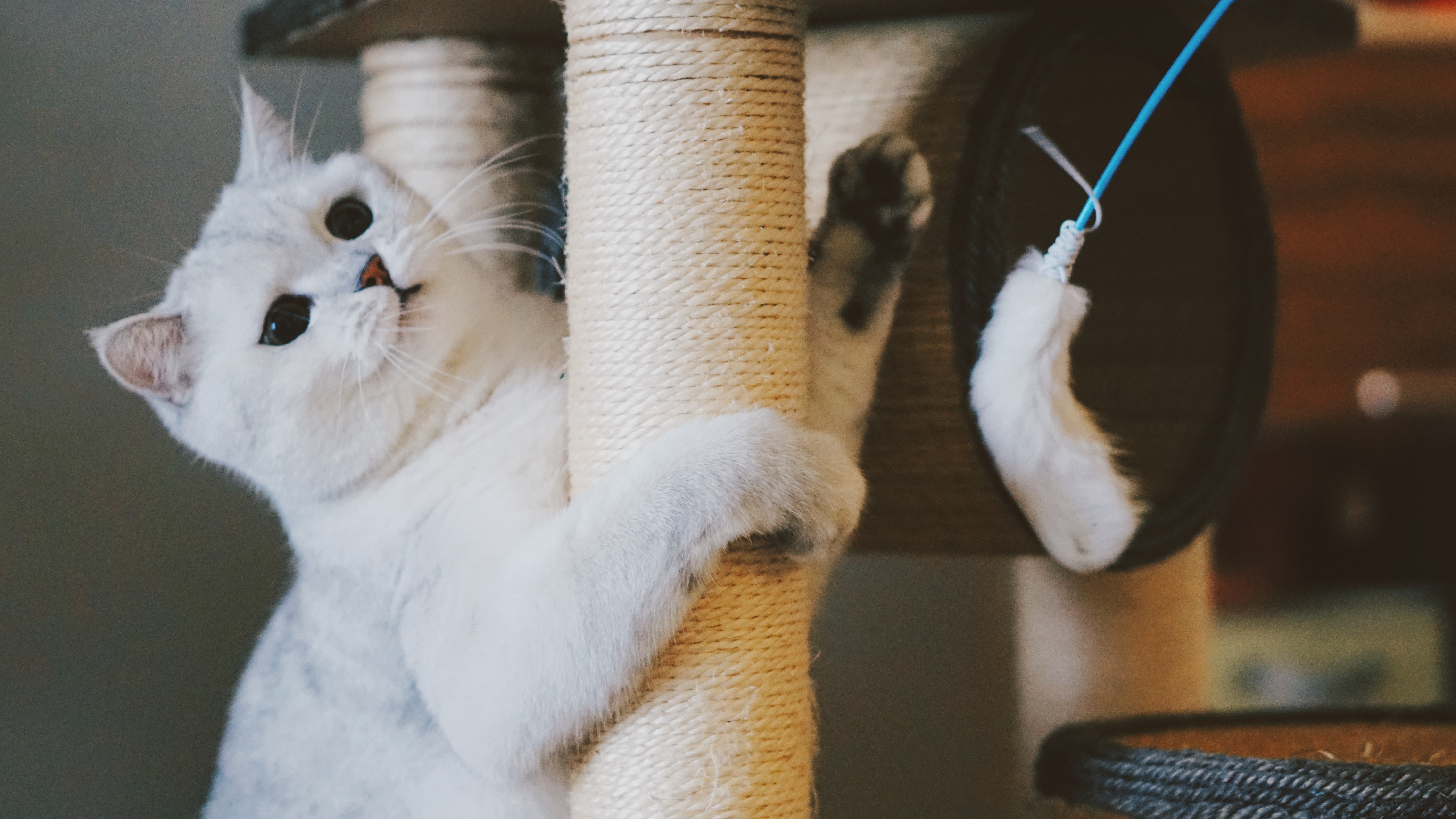It’s February, and that means love is in the air—but are you loving your pet the right way? You might not think there are right and wrong ways to do so but, as veterinarians, it's our job to let you know that there are certain ways you can approach your pet that may make them feel unsafe or upset. Here are five dos and don’ts to help you show your furry valentine some love this month and all year long.
DO Show Affection Appropriately
Is there really a wrong way to pet your dog or cat? Yes! If your pet recoils when you go in for a hug or your snuggle sessions often end in love bites, chances are you’re not getting it right. Your dog and cat's behavior is a key indicator of how they feel.
Most dogs like to be petted along the shoulders, neck, and chest, while cats tend to enjoy scratches along the cheeks and under the chin, as well as long strokes down the back (and sometimes tail). However, it’s important to recognize that each pet is unique and has individual preferences.
Watch for clues about what your pet enjoys (purring, tail wagging, and leaning in are good signs) and tailor your affection according to his preferences.
Still not sure? Follow these general guidelines:
- Move your hand in the direction of your pet’s fur, not against
- Do not move your hand over the top of your pet’s head—approach from the side instead
- Avoid the legs, muzzle, paws, and belly unless invited
DON’T Love Him with Food
Who can resist those puppy dog eyes? While it’s natural to want to show your affection with a treat or two, regular indulgence comes with serious consequences.
Excess weight puts stress on your pet’s joints and internal organs, putting him at risk for a variety of health problems, including skin infections, heart disease, diabetes, and arthritis.
Try replacing treats with something else your pet loves—such as verbal praise, extra-long ear rubs, or another lap around the block—or swapping them for a more nutritious alternative. For dogs, vegetables like carrots and green beans are a great substitute for treats from a box or bag. For cats, try hiding treats around the house, encouraging the cat to “hunt” for his food. If you need more guidance, the ASPCA has a list of healthy snack alternatives.
In addition, be sure to always measure your pet’s regular food and feed him on a set schedule to avoid overeating.
 DO Invest in His Health
DO Invest in His Health
You only want the best for your furry friend, but paying for veterinary services and other necessary expenses out of pocket isn’t always easy. What’s a devoted pet owner to do?
As veterinary medicine continues to advance, companion animals are living longer than ever—and pet insurance is a great way to ensure you can provide the care yours will need along the way.
Similar to human health insurance, these healthcare policies help cover veterinary expenses if your pet becomes ill or injured, saving you money, and more importantly, allowing you to make important decisions with your heart rather than your wallet.
Pet insurance also gives veterinarians the freedom to provide the best, most comprehensive care possible, ensuring your pet receives the level of care he needs and deserves.
DON’T Skip Regular Vet Visits
You know your pet better than anyone, but even you might not know when he’s sick. Dogs and cats are masters of disguise, which unfortunately means many signs of illness can easily go unnoticed. Annual nose-to-tail wellness exams are a critical step that allows your veterinarian to detect even the most subtle changes in your pet’s health—and diagnose and treat any issues early on.
Wellness visits include an assessment of your pet’s heart, lungs, eyes, ears, mouth, skin, and haircoat, as well as overall body palpation. Your veterinarian may also recommend lab tests, such as blood work, urinalysis, or a fecal screening to monitor your pet’s organ health and identify any potential problems.
In addition, these appointments are the perfect time to ask questions or address any concerns you have about your pet at home.
 DO Spend Quality Time Together
DO Spend Quality Time Together
It’s no secret that spending time with your pet strengthens your bond and provides numerous benefits for his health and yours, including reduced stress and anxiety and increased opportunities for exercise and socialization.
Remember that while your pet may only be a part of your busy life, he spends much of his day waiting for you to come home and interact with him. Whether it’s going for a daily walk, practicing some new tricks, chasing a feather toy or laser pointer, or spending a lazy Saturday snuggling on the couch, be sure to make time for regular one-on-one activities with your pet. You both need it!
If you have further questions, we can help you find a local vet!
